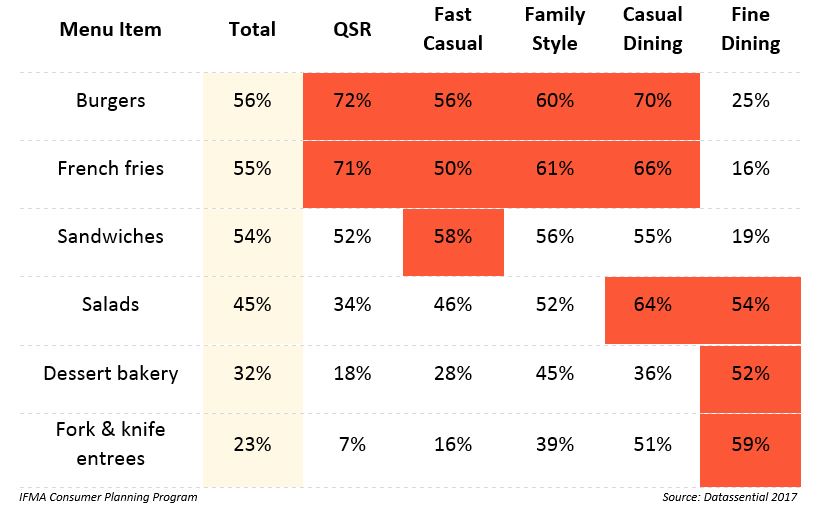
What if we could understand the underlying motivations and satisfaction levels for consumer away-from-home dining experiences? Based on consumer research commissioned by IFMA and executed by Datassential, now we can.
According to IFMA’s Consumer Planning Program (CPP) research, conducted by Datassential, customer satisfaction in foodservice is largely driven by the motivations that the patron has for the specific occasion. The motivation for a quick bite, for example, is much different than the motivation for a special occasion meal. Consequently, the satisfaction that a consumer derives from each occasion is based on different factors. Understanding consumers’ motivations and offering a quality meal solution that fulfills those motivations will be the driver of high guest satisfaction.
When a consumer makes a decision to procure food from a foodservice establishment, that decision is based on a series of motivational factors that range from a need for a quick and easy bite all the way to wanting to treat yourself or spend time with friends or family. Once the consumer has determined the motivation for their meal, they then use the foodservice segment that can best fulfill the need that they have. Not surprisingly, 59% of consumers see Quick Service Restaurants (QSR) as a segment that meets the need for a quick/easy meal, while only 22% see a Casual Dining restaurant meeting that same need. Conversely, when a consumer wants to treat themselves, they are more likely to choose a Casual or Fine Dining restaurant over a QSR.
Once a patron has chosen their foodservice venue that meets their motivation, their expectations for that venue correlate with the cost of their meal. For example, only half of consumers think that a QSR can deliver a quality overall experience, while 74% think a Fine Dining restaurant can deliver a quality overall experience (see chart below).

This does not necessarily mean that QSR restaurants cannot deliver high guest satisfaction. Instead, it suggests that a consumer does not go to a QSR expecting to have a memorable experience; they chose that QSR because it meets a basic need for speed and convenience. A Casual Dining restaurant, however, has to deliver on heightened expectations from the consumer since 65% of them expect to have a quality overall experience while dining there.
Inherent in guest satisfaction is that there are common foods and beverages that are enjoyable across any foodservice segment and there are others that are more trusted at a higher priced restaurant. Consumers have high trust ratings for foods like burgers, fries, and sandwiches at multiple segments. However, their trust level for fork and knife entrees drops substantially unless they go to a Casual or Fine Dining restaurant.

So, a QSR has to deliver on the core, basic foods and then differentiate themselves by exceeding lower consumer expectations for non-core items, like salads or dessert bakery. A fine dining restaurant, on the other hand, is expected to be exceptional with fork & knife entrees, salads, and dessert bakery.
Consumers have a pre-determined expectation for their visit to a restaurant. Meeting or exceeding that expectation is the key to driving enhanced guest satisfaction. If a consumer’s motivation is for speed and convenience, the QSR that promptly delivers on that need will be preferred. If a consumer’s motivation is for a leisurely meal, they will likely select a Casual or Fine Dining restaurant and will expect to pay more for that experience. It is the incumbent on that restaurant to meet or even exceed those heighted expectations in order to drive repeat business.
IFMA’s Consumer Planning Program is a program dedicated to delivering relevant and actionable research to its member companies. To learn more about how to get involved with the Consumer Planning Program, contact:
Charlie McConnell | Sr. Director of Insights & Best Practices at IFMA charlie@ifmaworld.com | 312-253-4700
